The major luxury brands continue to break their boundaries and Chanel to play coffee pop-up shops.
"We will not change our brand strategy for the younger generation. If you want to live in the Chanel way, that's fine, and if you don't want to, we certainly respect that choice. " Bruno Pavlovsky, president of Chanel's global boutique division, said in an exclusive interview with BOF in April 2016.
The truth is that no luxury brand will go against the young people who are becoming the mainstay of consumption. And Chanel its brand marketing strategy, fashion catwalk style, and even change the fashion design itself. Take a look at Chanel's 2016 advertising and fashion blockbuster protagonists: from 15-year-old Willow Smith, 16-year-old Lily-Rose Depp to 17-year-old Ouyang Nana, these new stars are all helping Chanel connect with the new generation. "it was rare before," said fashion blogger Chrison.
The bizarre "space show" attracted a lot of media coverage in Paris in early March, when Chanel held the 2017 Plus 18 fall / Winter series. Creative director Karl Lagerfeld moved the virtual rocket into the show, turning it into a space station, injecting a sense of technology into clothing design. Along with the new fashion is Chanel's brand emoji package, an all-pink emoji package designed to promote Chanel's new lip glaze. This is not new. Marketing-savvy Nike has also launched emojis to attract millennials who are active in social networks.
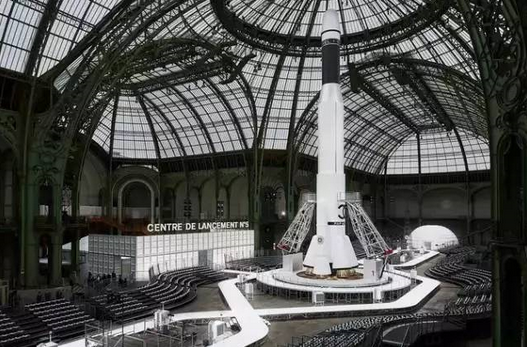
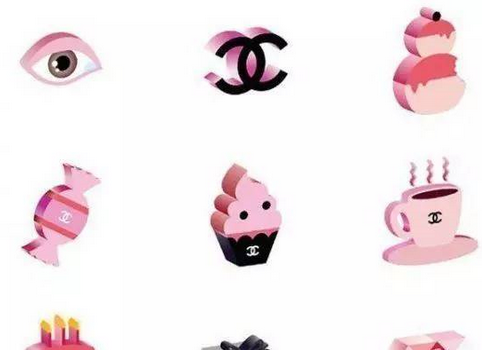
(Chanel's 2017 March 18 fall and Winter Series, which brings virtual rockets to the show. Along with the new fashion is the iMessage emoji package made by Chanel to promote the new lip glaze. )
In addition to space shows and memes, Chanel opened a flash store Coco Caf é in Tokyo in early March. On March 15, American rapper Frank Ocean suddenly released a single called "Chanel," and Chanel immediately echoed it on Instagram, looking like a planner.
In March, this kind of news about Chanel was constantly exposed on various websites. The news gives the impression that Chanel, which emphasizes the classic, is now beginning to hunt for novelty.
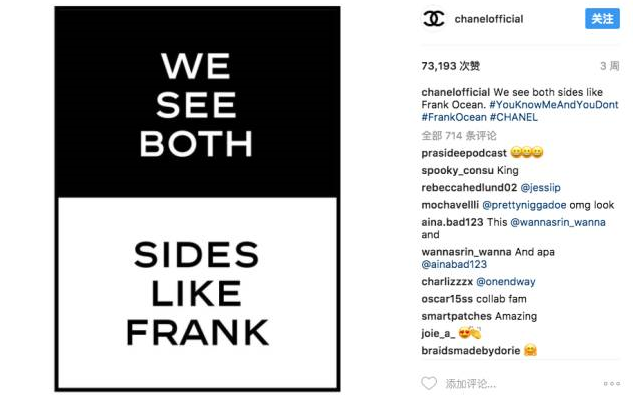
(Chanel posted pictures on the official Instagram, echoing the single "Chanel" released by rapper Frank Ocean. )
As younger marketing increases, luxury brands are losing their former mystique and increasingly chasing media exposure; today's luxury brands seem to be starting to "drop their posture"-at least, it may be hard to associate luxury with trendy brands, street graffiti and rappers before a series of partnerships between LV, Gucci and Chanel in 2016.
However, younger marketing seems to be lively, but it can not touch the foundation of management. What Chanel faces is not just the problem of brand aging. Unlike the Gucci and Coach of changing designers, Chanel doesn't seem to want to reshape the brand, they just want to find a new way of communication to convey the original brand value more effectively.
However, from cutting prices to changing designers to moving into e-commerce, luxury brands continue to break their boundaries, which makes people wonder: is the situation really that bad?
What happened to Chanel?
In August 2016, Chanel disclosed Chanel's performance in 2015 in a document submitted to regulators in Amsterdam, the Netherlands. As of December 31, 2015, sales of the group were $6.24 billion, down 17% from a year earlier, while operating profit was $1.6 billion, down 23% from a year earlier. Chanel, a private company, declined to comment on the disclosure.
Under the background of the slump in the luxury market in the past two years, the sales and profits of many luxury brands are on a downward trend. By comparison, we can find that the sales of Chanel have declined greatly, the operating income and net profit have dropped to varying degrees, and the performance is close to that of Prada, the weakest listed brand in the previous two years. In 2014, Chanel also led the global luxury market with a 38 per cent rise in profits.
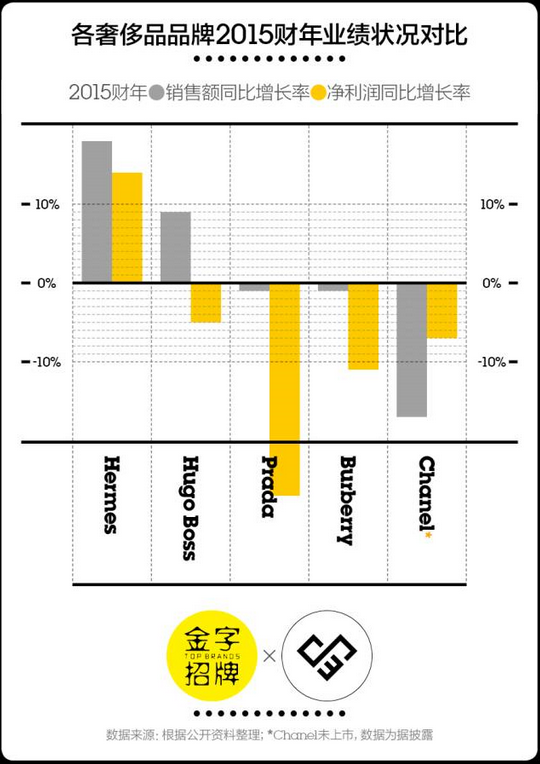
The decline in Chanel's performance is bound to be affected by a weak economy and a downturn in the global luxury market. Single product design style and intensified competition in pillar products may be the reasons that hinder the growth of Chanel performance.
Karl Lagerfeld, the 83-year-old creative director, has joined Chanel since 1983 and has not yet retired. The fashion world's evaluation of Karl Lagerfeld's design is not as high as his own. Robin Givhan, author of News Week, believes that Karl Lagerfeld repeatedly interprets the classic elements of Chanel but does not produce its own design, while its overexposure and the personal label of "Lafayette" cover up the shortcomings of his work itself.
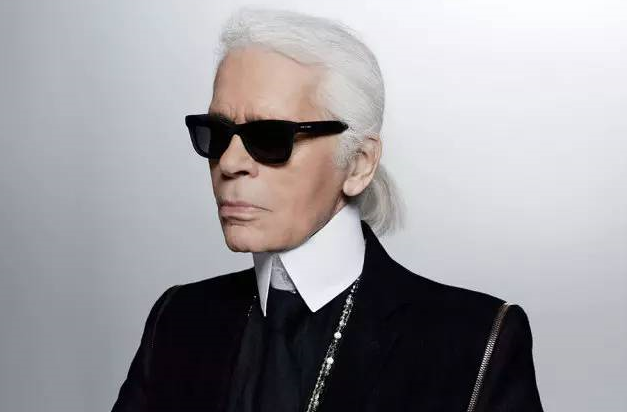
Karl Lagerfeld, the creative director of sunglasses with white hair and long braids, is often referred to as the "Lafayette". Image source | candidmagazine)
"the design is not fashionable enough," said Xiaojie, 33, who started a business in the fashion field. "being able to engage in marketing is one aspect, but the important thing is the product itself. Those plaid are actually very old-fashioned, and young people don't like to wear them. "
But consumers will also pay for the classic. "the designs of the popular LE BOY series and 2.55 series in recent years are based on the most fundamental genes of Chanel," said an unnamed person in the luxury goods industry. He doesn't think Chanel wants to do fashion.
Chanel has a set of mature practices in the production and distribution of products to limit the so-called popular styles. "Chanel only has the so-called 'classic style'." Recently, Lagerfeld revealed that it will add Lego elements to shoes and accessories, which is a continuation of "Lego bag" a few years ago.
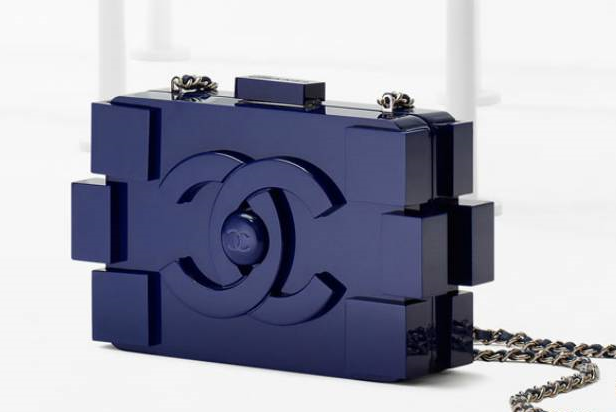
(Chanel's Lego bag. )
From the point of view of the last two fashion shows, the classic sense of Chanel design is gradually giving way to modern and technological sense. Chanel is looking for a contemporary way to interpret classics, from the opening robot of the 2017 take-18 spring / summer series to the 2017-18 fall / winter space show. But fashion critic Ana Andjelic sharply criticized the space show, saying the gimmicks overshadowed the design itself.
You can find a lot of criticism of Karl Lagerfeld design, but maybe Chanel needs the personal value of Karl Lagerfeld. Not every luxury brand has a creative director who is deeply involved in brand history and seems to keep pace with the times. such people are more representative of brand history and rarity. If you replace Lafayette, the brand may pay a higher price.
This is just part of haute couture design. Pavlovsky calls haute couture the DNA of Chanel, but haute couture is not the main driver of Chanel business growth. Chanel's previous high-performance growth depended on cosmetics and perfumes.
David Wu, a luxury goods analyst at Telsey Advisory in new York, had previously estimated that beauty and perfumes accounted for about 55% of Chanel's business, and Chanel No.5 perfumes had been responsible for maintaining high growth in the category. But in 2015, Chanel reported in France that revenue from its makeup and perfume business plunged 21% to $2.91 billion.
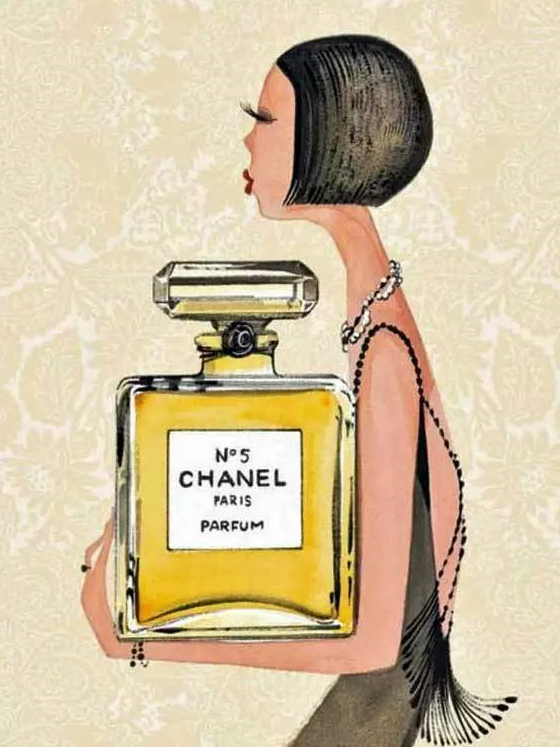
(Chanel's previous high-performance growth depended on the beauty and perfume business, and Chanel No.5 perfume has been responsible for its performance. Image source | pursebop)
Behind the slump is the increasingly fierce competition between these two types of business. Prada's by-line brand Miu Miu launched its first fragrance product in 2015 in partnership with the Koty Group, the world's largest perfume company, and LVMH launched a new fragrance line last year. In addition to luxury brands, beauty brands such as Estée Lauder, L'Or é al and Shiseido are also seizing the high-growth market of makeup and perfume.
On the other hand, the global price adjustment and plagiarism of fashion design in 2015 damaged the brand image of Chanel; coupled with the late layout of Chanel in e-commerce, it only began to test e-commerce in 2015-a combination of multiple factors seems to confirm the inevitability of its declining performance.
What actions did Chanel do?
Chanel CEO Maureen Chiquet, which is still in office in 2015, made a global price adjustment decision in 2015, raising the prices of some products in Europe and lowering prices in mainland China, keeping the price gap in the global market within 5 per cent. After Chanel first adjusted prices, other luxury brands, including Dior and Cartier, followed suit.
Bruno Pavlovsky affirmed the price adjustment policy several times in an interview last year, saying that Chanel had seen double-digit sales growth after the panic of the previous two months.
But in January 2016, the former CEO Maureen Chiquet, who made the decision to adjust the price, left, and Alain Wertheimer, the boss behind it, took over the operation. Maureen Chiquet has been with Chanel for more than 20 years, leaving because of a vague "strategic disagreement".
After Maureen Chiquet left, Chanel gradually expanded its e-commerce landscape. After launching capsule jewelry in 2015 with luxury ecommerce company Net-a-Porter and selling glasses online, Chanel expanded the online business of its handicrafts one by one. Last September, Chanel took an even bolder step in China: selling its new perfume on Wechat. By December last year, Chanel had launched an online shopping platform for beauty and perfumes on its Chinese website.
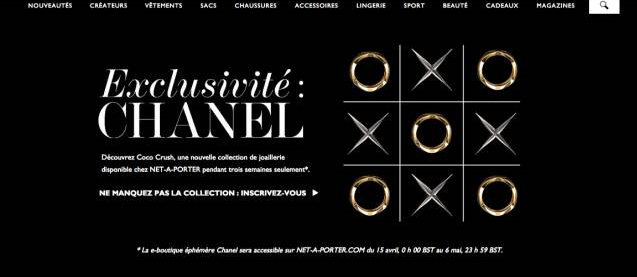
(Chanel has been working with luxury ecommerce Net-a-Porter since 2015 to sell jewelry, glasses and other products on its platform. Image source | beauty decoder)
"ecommerce can never replace the way people feel in the fitting room," Bruno Pavlovsky still seems restrained-but the actual Chanel's ecommerce is bold: even when Wechat sells No.5 's new perfume, Chanel does not maintain the rarity of luxury goods with a time limit. "there is no doubt that this is a global trend, and we also want to find a good way to do e-commerce," Bruno Pavlovsky said in an interview with Vogue last October.
The problem with e-commerce is that it is difficult to bring consumers an additional experience of luxury goods. Bruno Pavlovsky believes that this additional experience should be a customized experience, and Chanel must make e-commerce solutions according to the purchasing habits and needs of customers in different regions.
In 2016, the Chanel brand is getting younger from design to marketing. Fashion blogger Chrison saw that Chanel is gradually shifting from its previous position of "socialite" and "middle class" to young people. "this is mainly reflected in the fashion line, and the design is getting younger and younger on the street-- the plane embroidered sweaters of the Tee,2016 spring and summer series of Pakistan vacation series, which you can find frequently in fashionable girls' wardrobes, street photos, and even pictures of purchasing agents repeatedly brushing the screen," Chrison said. "in the past, when it comes to Chanel fashion, it must be tweed jackets and lady suits, but now many fashion items are more casual and suitable for daily wear."
When the younger generation moves from offline to online, luxury brands also need new ways to convey brand value.
Digital marketing is what Chanel is good at. Last May, Chanel held a series of advanced handicrafts workshop series of "Paris in Rome" in 2015 in Beijing, and Chanel took advantage of this opportunity to provide an online participation experience in conjunction with Wechat: from invitation letters, route design, code entry, preview of classic styles to clothing sharing are all based on Wechat platform, and Pavlovsky admits that the original intention of the attempt is "really based on the younger generation". Chanel's ads on Wechat moments are also targeted based on big data, helping Chanel to enter the market segment with different faces.
Pop-up stores are another way to convey brand value. The Coco Cafe pop-up store mentioned earlier actually sells the experience-check out the coffee park amenities in Coco caf é and the novel make-up experience. Flash stores enable luxury brands to create topics at a lower cost in the short term, focusing on attracting young people to return to the offline experience while ensuring their "rarity" image. This is a good idea for luxury brands.
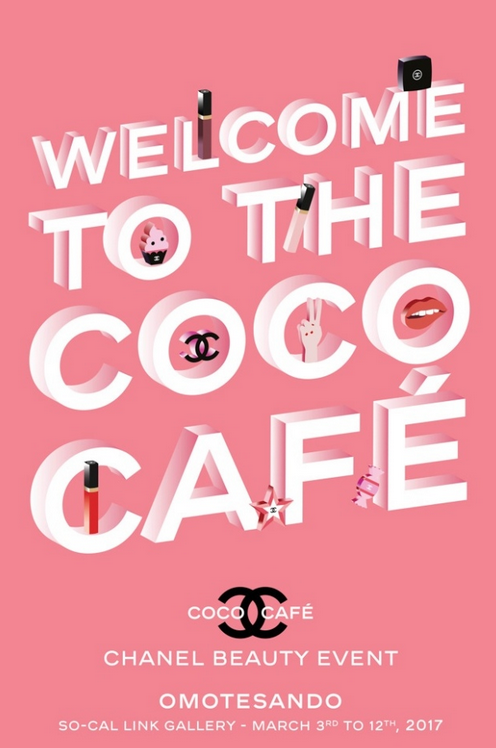
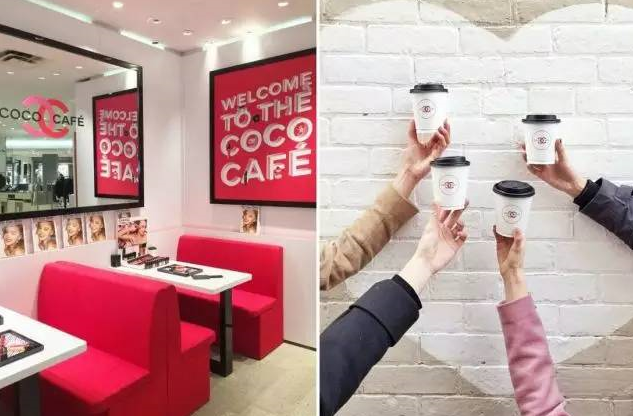
(in March, Chanel set up a 10-day pop-up store in Japan. On April 12, the flash store in Shanghai will also open to welcome guests. Image source | HYPEBAE)
In addition to delivering brand value in these new ways, Chanel is also investing more in important businesses-in order to revive Chanel No.5 sales, Chanel re-launched a new version of the No. 5 perfume in 2016 and invested more in fragrance advertising. In China, you see four spokesmen for the new perfume No. 5: Hu GE, Song Qian, Liu Haoran and Ouyang Nana, who cover idols of different young groups. Three days after Hu GE's perfume film was released, Weibo reposted 110000 times, surpassing the influence of Lily-Rose Depp commercials.
Chanel is also upgrading its supply chain. Last year, Chanel invested in four professional silk suppliers to lay out the upper reaches of the supply chain and improve its own silk production process. Pavlovsky mentioned that high-capacity fabric manufacturers are a key factor in ensuring timely delivery of clothing.
Did these methods work?
"2016 was Chanel's best year," Pavlovsky said in an interview with FT last October. Pavlovsky declined to disclose specific financial data. FT believes that Chanel's price adjustment policy began to play a positive role in 2016.
Chrison sees that the younger generation is paying more attention to Chanel. He saw that Chanel is gradually getting rid of the "lady" image of the past, while more young girls and boys are following Chanel's new products-Chanel's recently launched Gabrille handbags have also been sold out in China.
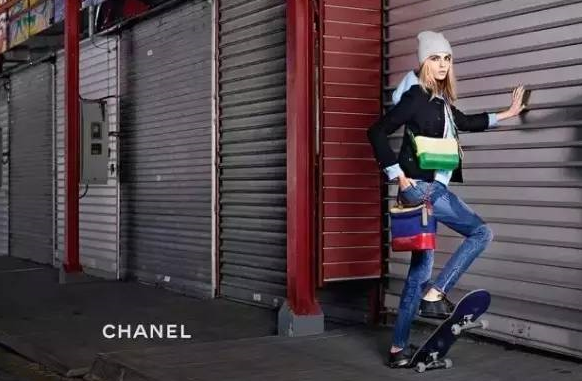
(British model Cara Delevingne shoots commercials for Gabrille handbags. )
For now, the luxury market is picking up, but competition is still fierce. BCG predicts that the luxury market will grow at an average rate of 4% to 5% between 2017 and 2023, and brands will have to invest more and innovate if they want to keep pace with the market average.
We can believe that Chanel represents another development path for luxury brands besides Gucci, Coach and Dior: keep their own brand icon (Lafayette), renovate classic products, expand sales channels, strengthen the supply chain, and find a better way to spread.
Maybe not every brand needs a complete turnaround. Maybe the brand can continue to develop by innovating its classics. Chrison has visited the handicraft workshop under Chanel, which inherits the traditional clothing craftsmanship and retains the traditional characteristics of Chanel. This is also interesting: Chanel still retains its traditional brand core while opening up a younger market and becoming more "avant-garde".
An unnamed person in the luxury industry also seems to explain why Chanel chose this path: "after all, Chanel is a family business, and if it wants to change, it must not be changed by professional managers, but by the brand owners themselves."
Important Notice :
前街咖啡 FrontStreet Coffee has moved to new addredd:
FrontStreet Coffee Address: 315,Donghua East Road,GuangZhou
Tel:020 38364473
- Prev

Honghualing Village, Longmen Town, Ding'an takes the lead in setting up economic cooperatives to help villagers shake off poverty and become rich.
Honghualing Village, Longmen Town took the lead in setting up an economic cooperative to help villagers shake off poverty and become rich. Recently, the reporter walked into Honghualing Village, Longmen Town, Dingan County. In the east of the village, there are lush coffee and betel nut seedlings on a flat piece of land, greedily absorbing nutrients from nature in the sun, and the tender green leaves swing around with the spring breeze, bringing unlimited vitality. This is where the villagers are rich in agriculture.
- Next
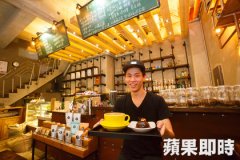
28-year-old boss, you'll be amazed at how familiar he is with coffee.
Busy modern people are used to drinking coffee, but they may not know how to taste coffee. A cup of coffee in chain stores, which is not cheap, may not know what is meant by boutique coffee. In addition to the impressive industrial decoration style of this exclamation point coffee in Sanzhong District, New Taipei City, once you talk to the 28-year-old shopkeeper, it is hard to forget his attitude of focusing on introducing coffee. 1989
Related
- What is the standard process for the purpose of coffee cup testing? What is the difference between hand-brewed coffee and cup testing?
- How to use hand-brewed coffee paragon small golden balls? How does cold coffee lock in the aroma of coffee?
- Is American coffee black? What is the difference between American coffee and drip coffee?
- Unexpected! Well-known tea beverage brand Lele Tea will withdraw from the Zhengzhou market!
- Starbucks enters the fashion and beauty industry?! Netizen: Give me an ice American eye cream
- Why can American refills for free? The difference between Americano and American drip pot coffee
- Being chased out of the rain in front of Starbucks?! Store: Sheltering from rain under umbrellas poses a safety hazard
- The white moonlight has changed?! Lucky launches "Big Winter Pear American"
- Hand-brewed coffee three-stage method, high-sweet and universal brewing method to share! What does the high sweet water level of hand-brewed coffee mean?
- What is the difference between raw, refined and full espresso coffee? How to extract espresso and taste good?

